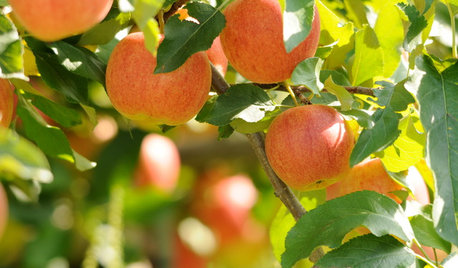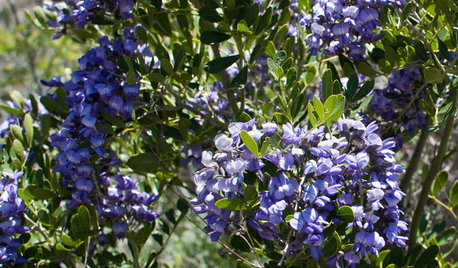Grafting Apple to Non-Fruiting Pear Tree Question.
dragonflywings
16 years ago
Related Stories

GARDENING AND LANDSCAPINGCrazy for Fruit Trees
Whether a single citrus or a mini apple orchard, even the smallest landscape space can bear deliriously delicious fruit
Full Story
EDIBLE GARDENSHow to Add an Apple Tree to Your Edible Garden
Readily available, beautiful and fragrant, apple trees offer four-season interest along with crisp, juicy fruit
Full Story
FARM YOUR YARDIf You Have Room for Only One Fruit Tree ...
Juice up a small garden with one of these easier-care or worth-the-effort fruit trees for a mild climate
Full Story
EDIBLE GARDENSHow to Grow 10 Favorite Fruit Trees at Home
Plant a mini orchard in fall, winter or early spring to enjoy fresh-off-the-tree fruit the following year
Full Story
WINTER GARDENINGHow to Prune Your Fruit Trees in Winter
Garden chores may slow down this season, but pruning your fruit trees now means healthier plants that will produce more
Full Story
TREESHow to Plant a Fruit Tree
Great Home Project: Choose the best tree for your region, plant it to thrive and enjoy sweet rewards year after year
Full Story
EDIBLE GARDENSHow to Grow Your Own European and Asian Pears
Try these trees for their good looks, delicious fruit and wide range of sizes — plus you can espalier them
Full Story
GARDENING GUIDESHow to Keep Your Citrus Trees Well Fed and Healthy
Ripe for some citrus fertilizer know-how? This mini guide will help your lemon, orange and grapefruit trees flourish
Full Story
LANDSCAPE DESIGNPretty Trees for Patios, Paths and Other Tight Spots
Choose trees for their size, shape and rate of growth — or shape them to fit your space. Here's how to get started
Full Story
TREES6 Unsung Spring-Blooming Trees
Billowy blooms and rare fragrances will make you wonder how these flowering trees could ever have been underused in landscapes
Full StoryMore Discussions








joereal
dragonflywingsOriginal Author
Related Professionals
Holly Springs Landscape Architects & Landscape Designers · Panama City Landscape Architects & Landscape Designers · Goodyear Landscape Contractors · Edmond Landscape Contractors · Federal Way Landscape Contractors · Galt Landscape Contractors · Methuen Landscape Contractors · Midland Landscape Contractors · Mission Viejo Landscape Contractors · Ponte Vedra Beach Landscape Contractors · Tacoma Landscape Contractors · Tuscaloosa Landscape Contractors · West Coon Rapids Landscape Contractors · Lauderdale Lakes Landscape Contractors · Greenfield Landscape Contractorsjellyman
lucky_p
joereal
jellyman
dragonflywingsOriginal Author
jellyman
joereal
jellyman
dragonflywingsOriginal Author
scaper_austin
jellyman
murkwell
joereal
murkwell
bberry_gw
joereal
bberry_gw
scaper_austin
joereal
dragonflywingsOriginal Author
joereal
lucky_p
scaper_austin
joereal
scaper_austin
thom7
raygrogan
raygrogan
milehighgirl
FruitTreesTexas
barnetmill
Sunrise Vineyards
Sunrise Vineyards
murkwell
marknmt
Sunrise Vineyards
marknmt
murkwell
John Wagenet